Siem Reap – Day 2-1 – Angkor Thom and Bayon
Friday, 02-Feb-2018
Tags: Travel
The morning started with a wonderful buffet breakfast at the hotel.
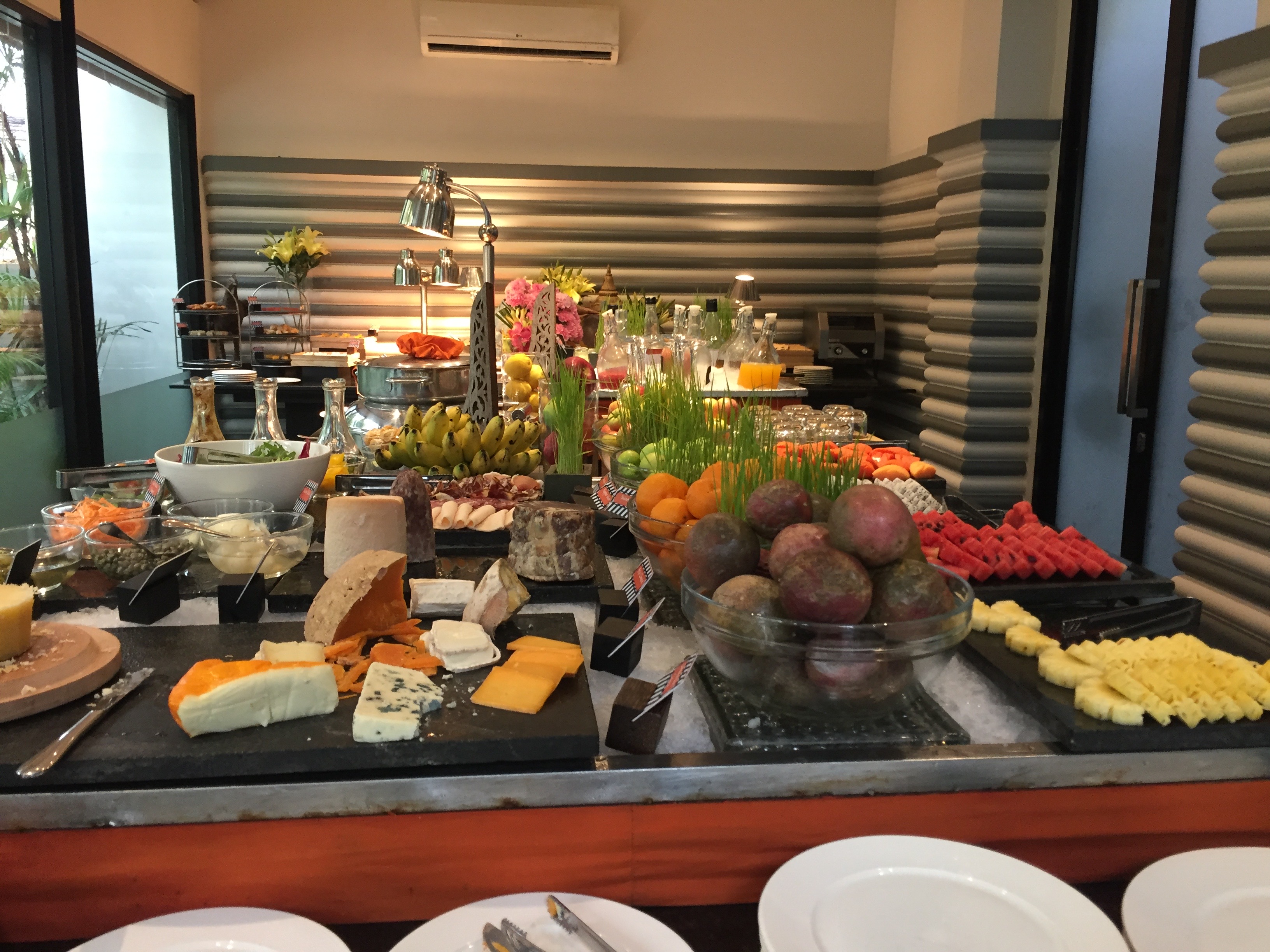
One side of the outdoor eating area. Note the swinging seats (we sat at a conventional table).
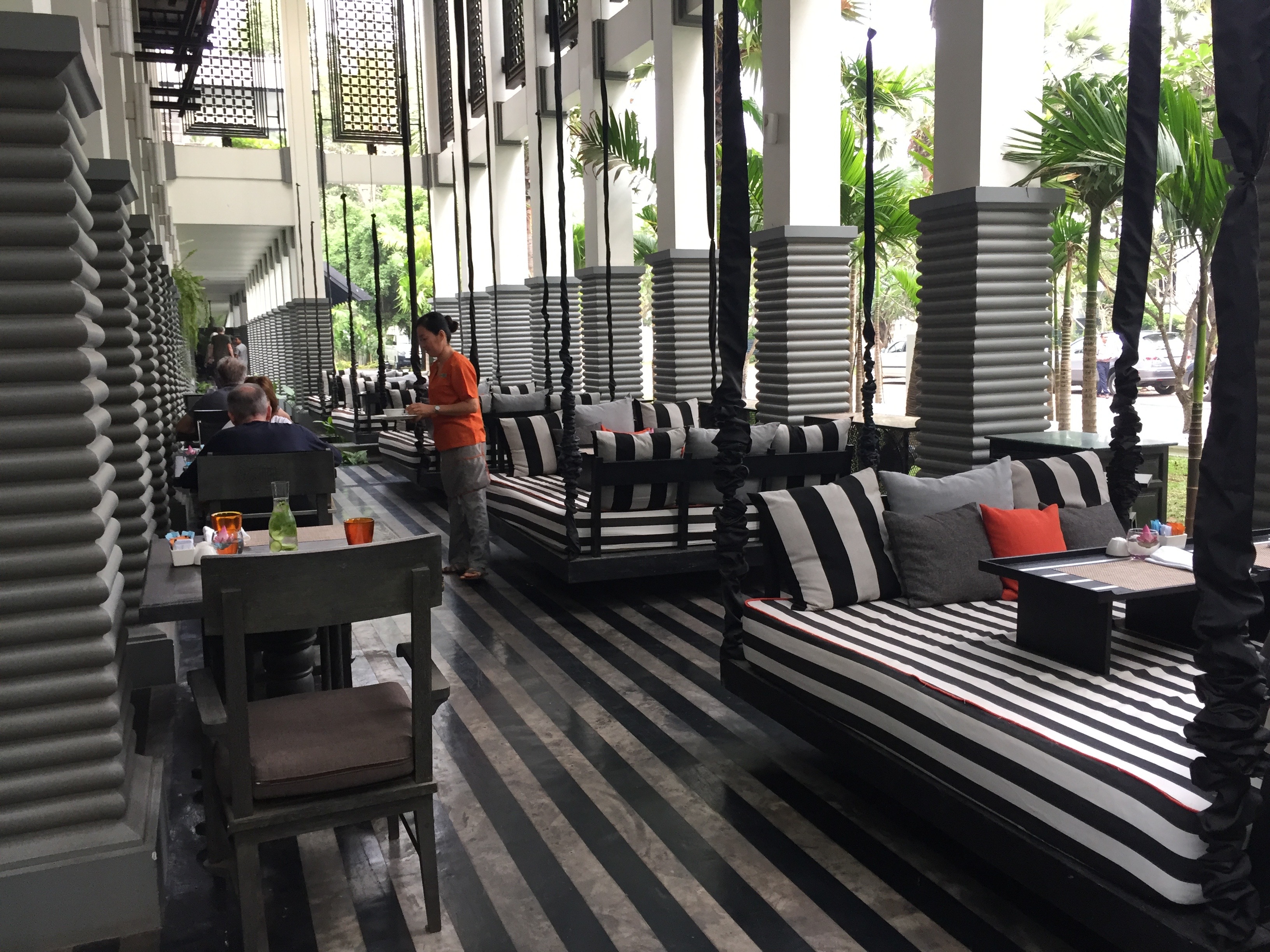
Mony picked us up at 8:30 am. Today we had a driver so that we didn’t have to worry about the car or have to double back at any point.
Our first temple of the day was Angkor Thom and the Bayon within.
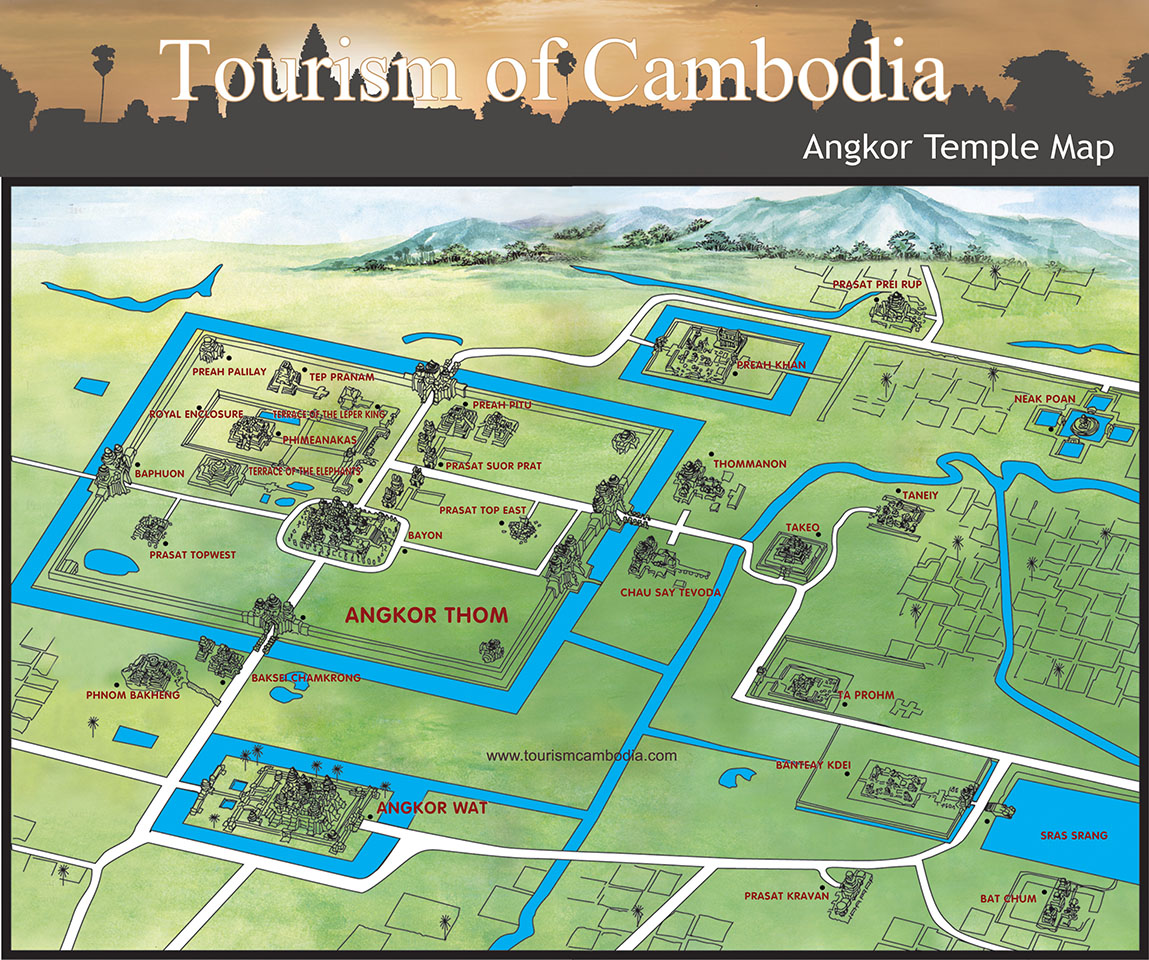
"Remarkable in scale and architectural ingenuity, the ancient city of Angkor Thom, which means Great City in Khmer, was founded by King Jayavarman VII in the late 12th century. The largest city in the Khmer Empire at one time, it is protected by a wall 26 ft (8 m) high, about 7.5 miles (12 km) long, and surrounded by a wide moat. The city has five gates – four facing the cardinal directions, and an extra one on the east side – all bearing four giant stone faces. Within the city are several ruins, the most famous of which is the Bayon, an atmospheric temple at the center of this complex.”
Our first stop was the amazing south entrance. "The causeway is lined by two balustrades formed by 54 gods on the left and 54 demons to the right, with each group holding a naga (snake), a reference to the Churning of the Ocean of Milk, the Hindu myth at the heart of Khmer culture.” (To create the Elixir of Immortality.)
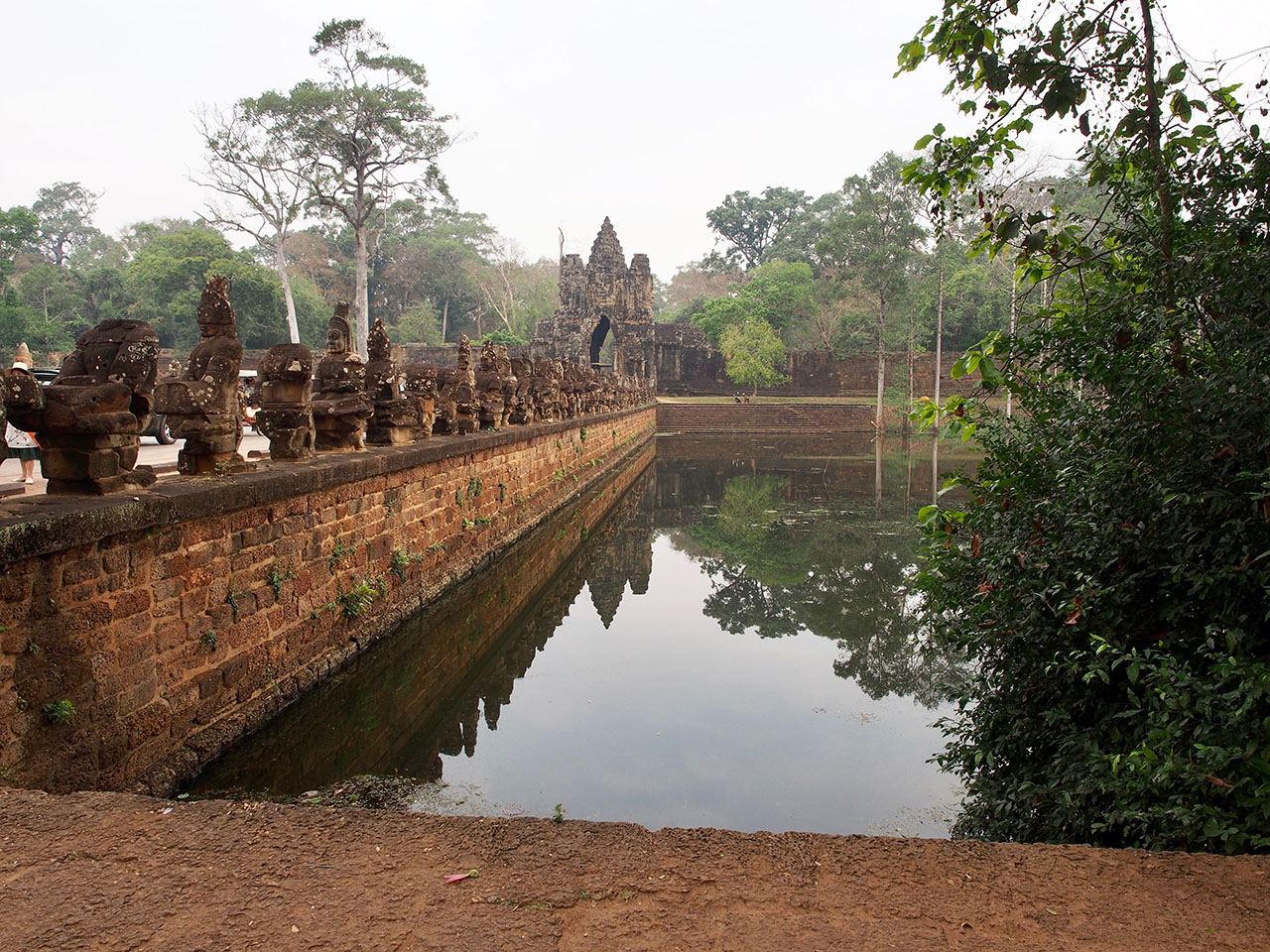
One of the gods.
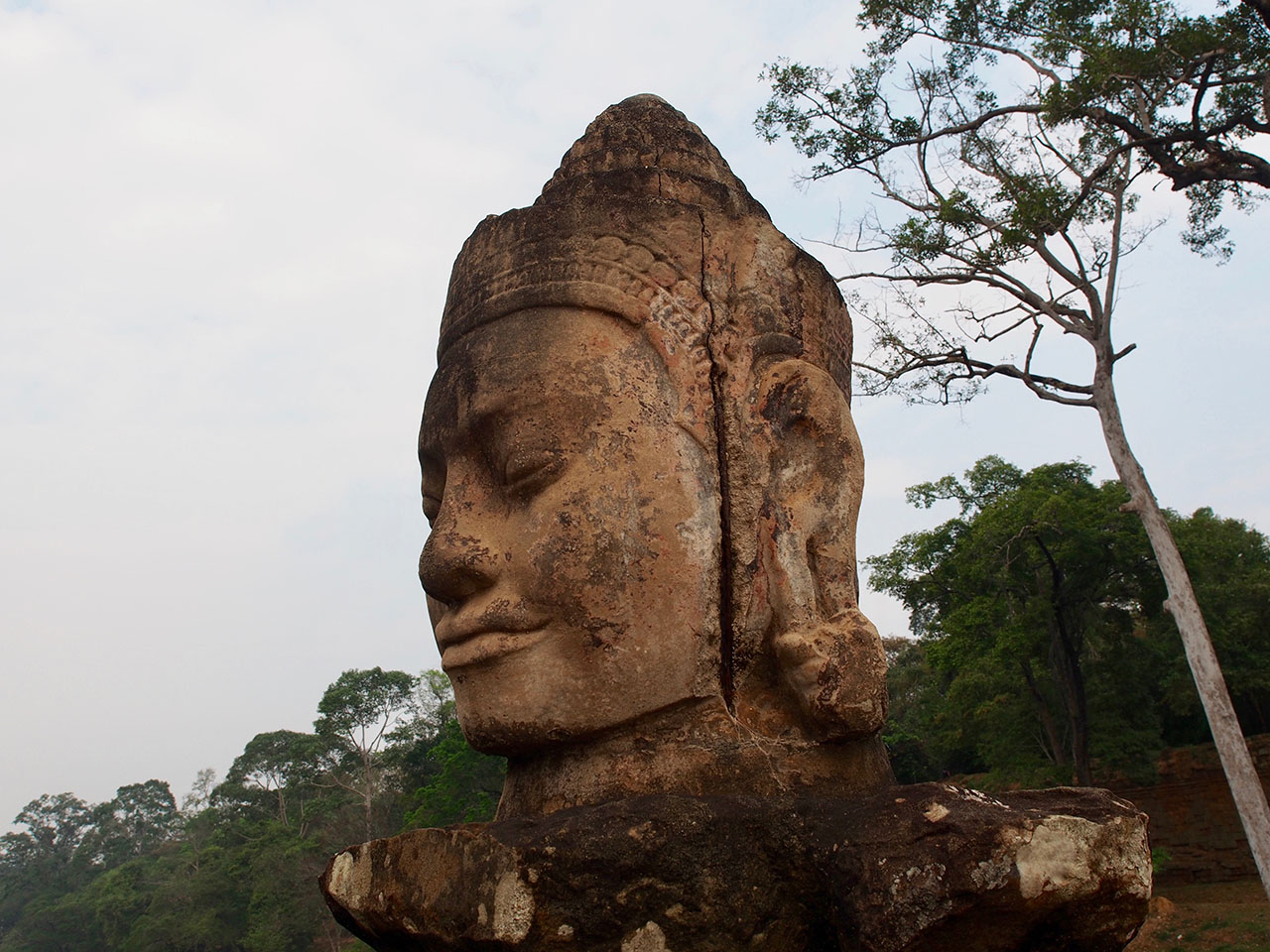
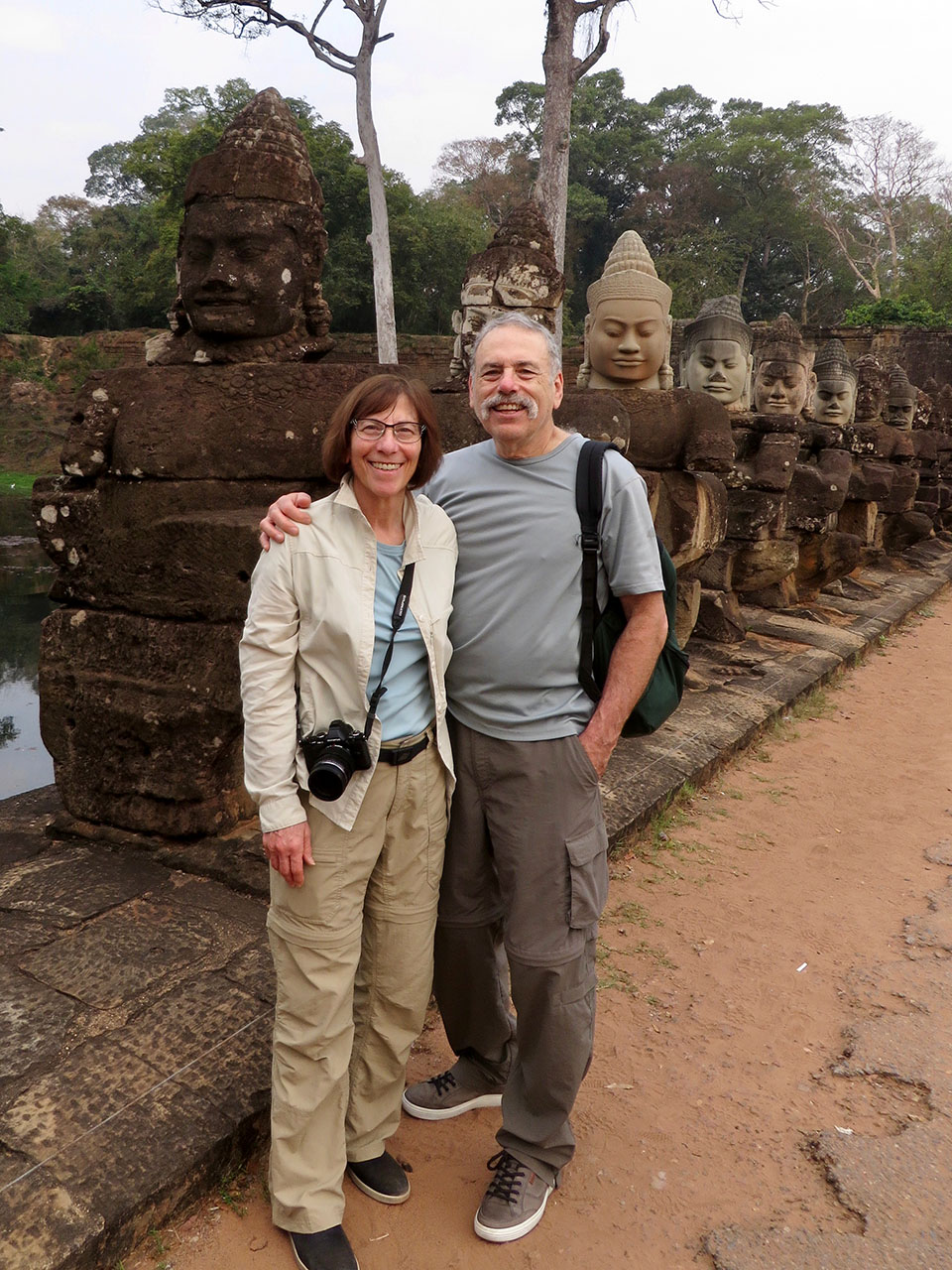
Faces of Bodhisattva.
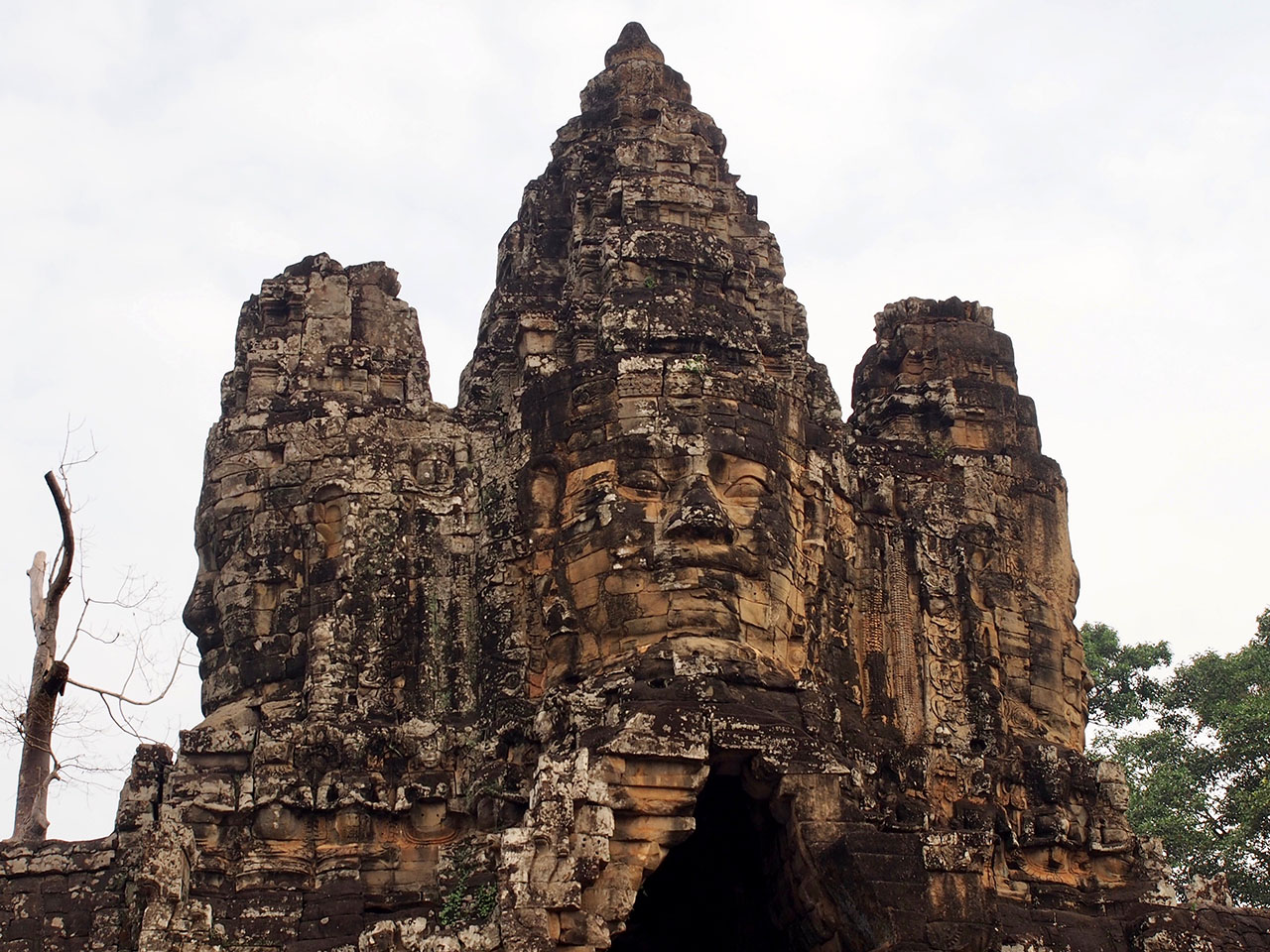
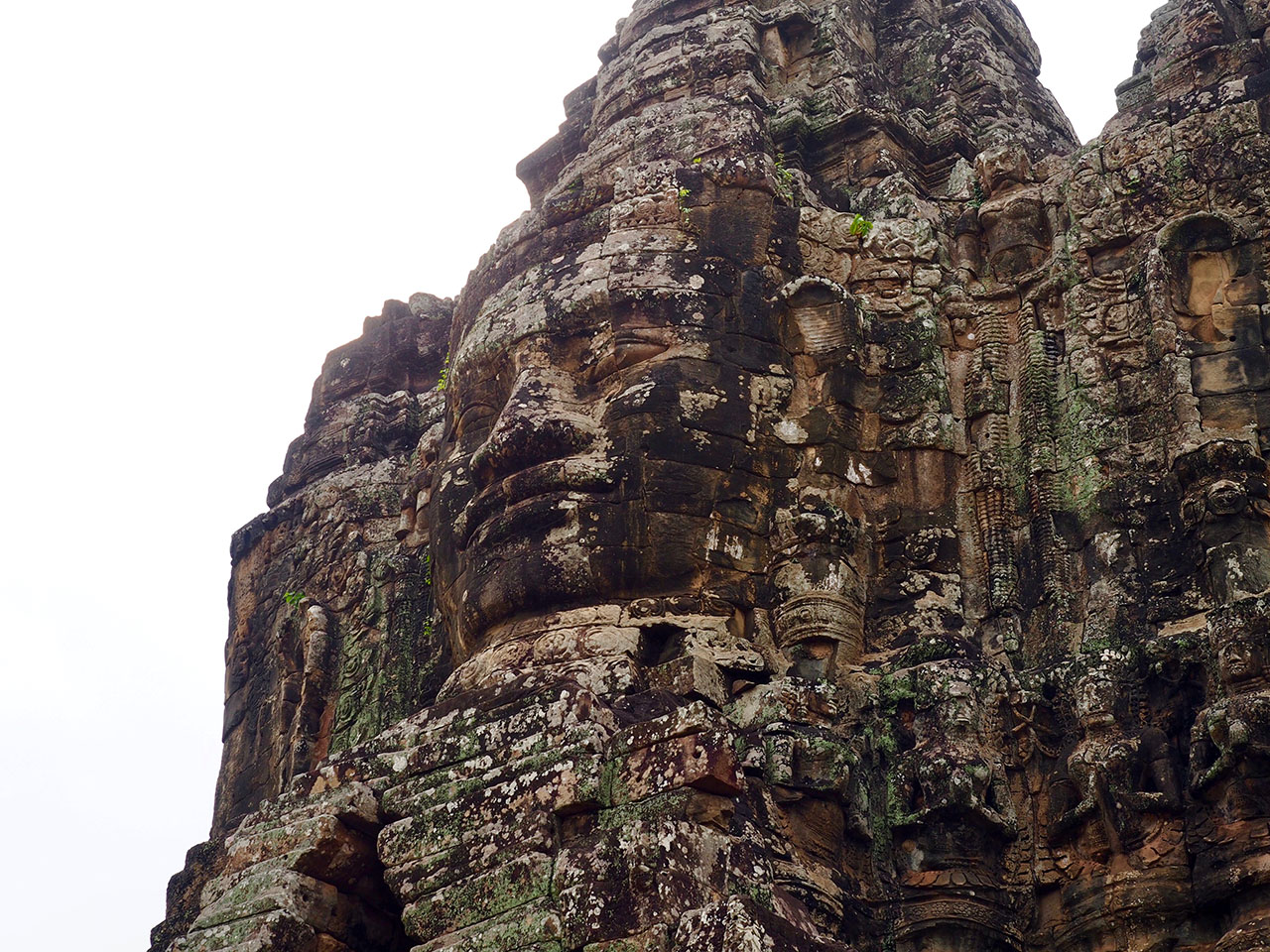
The three-headed elephant Airavata, the fabled mount of the Hindu god Indra.
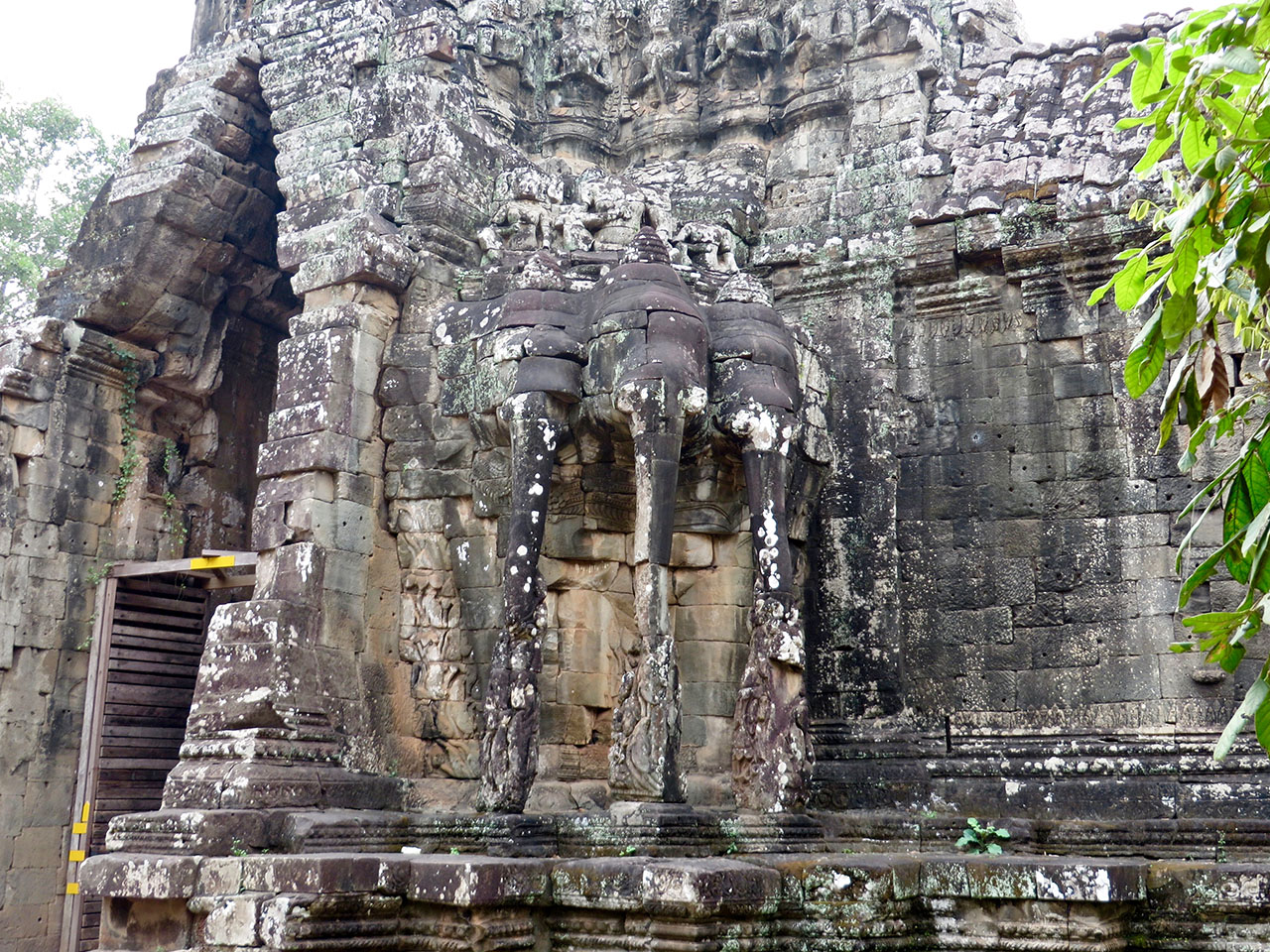
We got back in the car and were driven to the Bayon. "Located in the heart of Angkor Thom, the Bayon is one of the city's most extraordinary structures. This symbolic temple-mountain rises on three levels, and features 54 towers bearing more than 200 huge, yet enigmatic stone faces [Bodhisattva or the king or both]. It is entered via eight cruciform towers, linked by galleries that were once covered, and which are gradually being restored. These galleries have some of the most striking bas-reliefs found at Angkor, showcasing everyday scenes as well as images of battles, especially those against the Cham.” (A civilization to the south in what is now part of Viet Nam.)
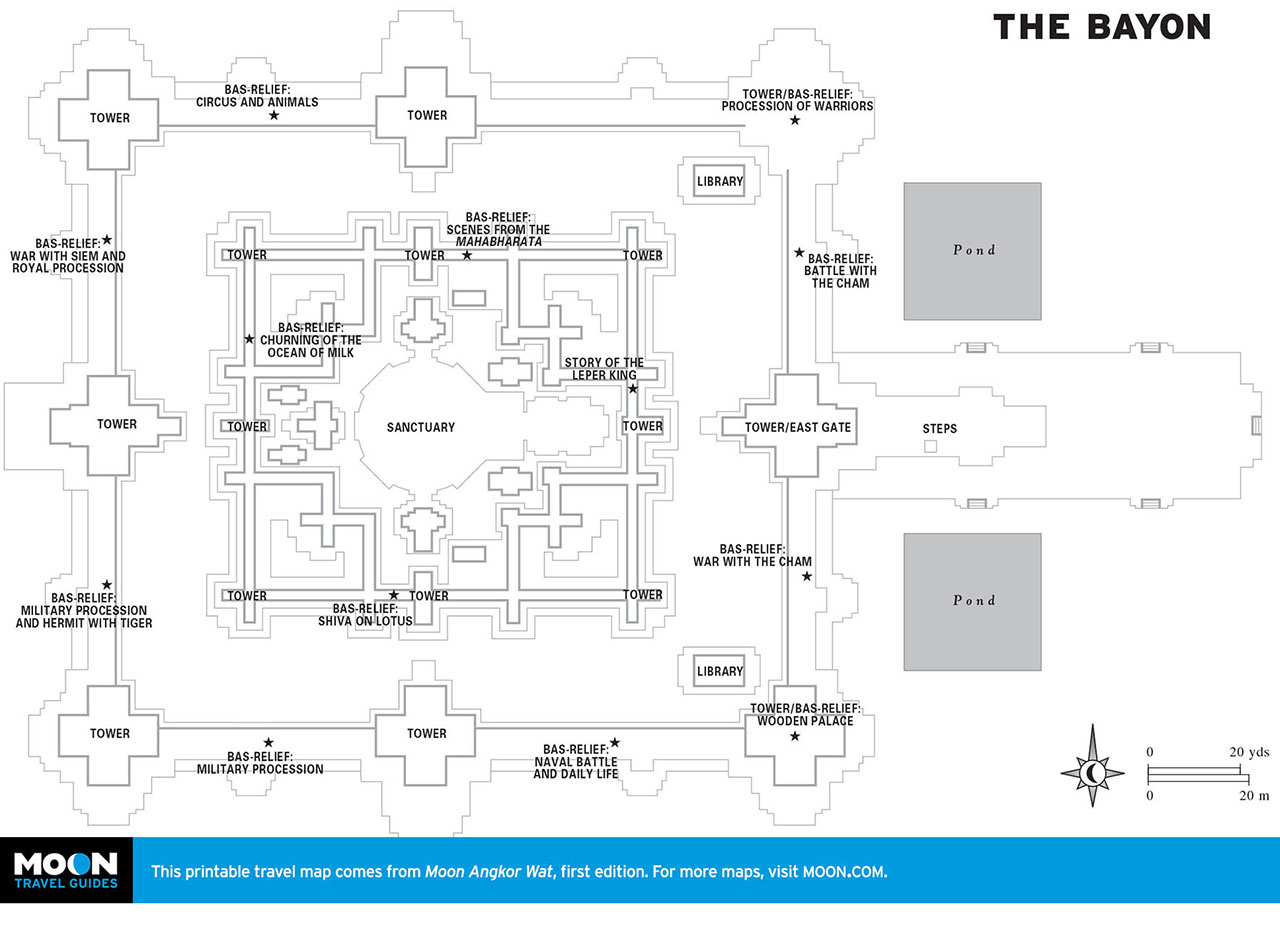
The Bayon.
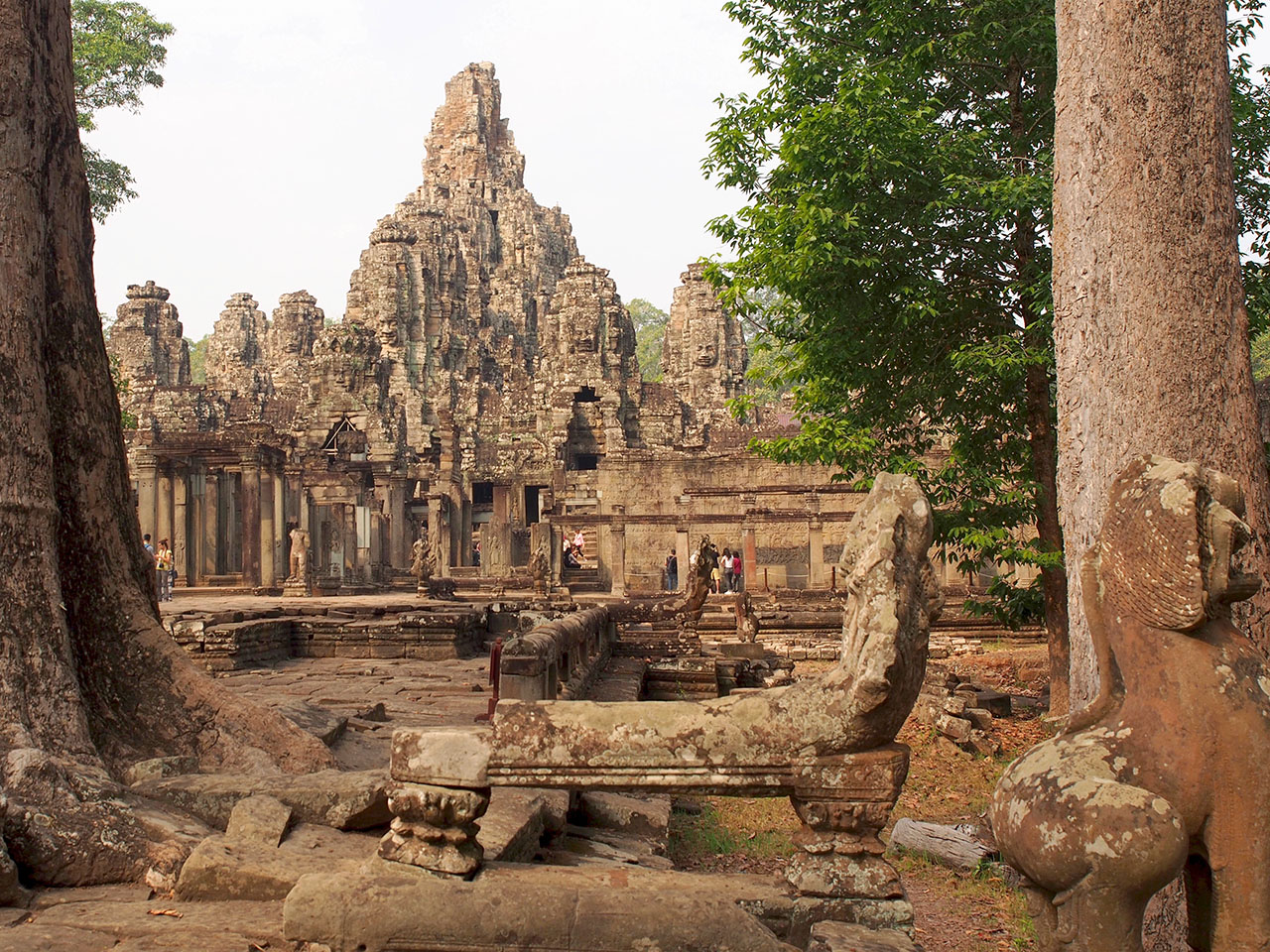
Bodhisattva (or the king or both).
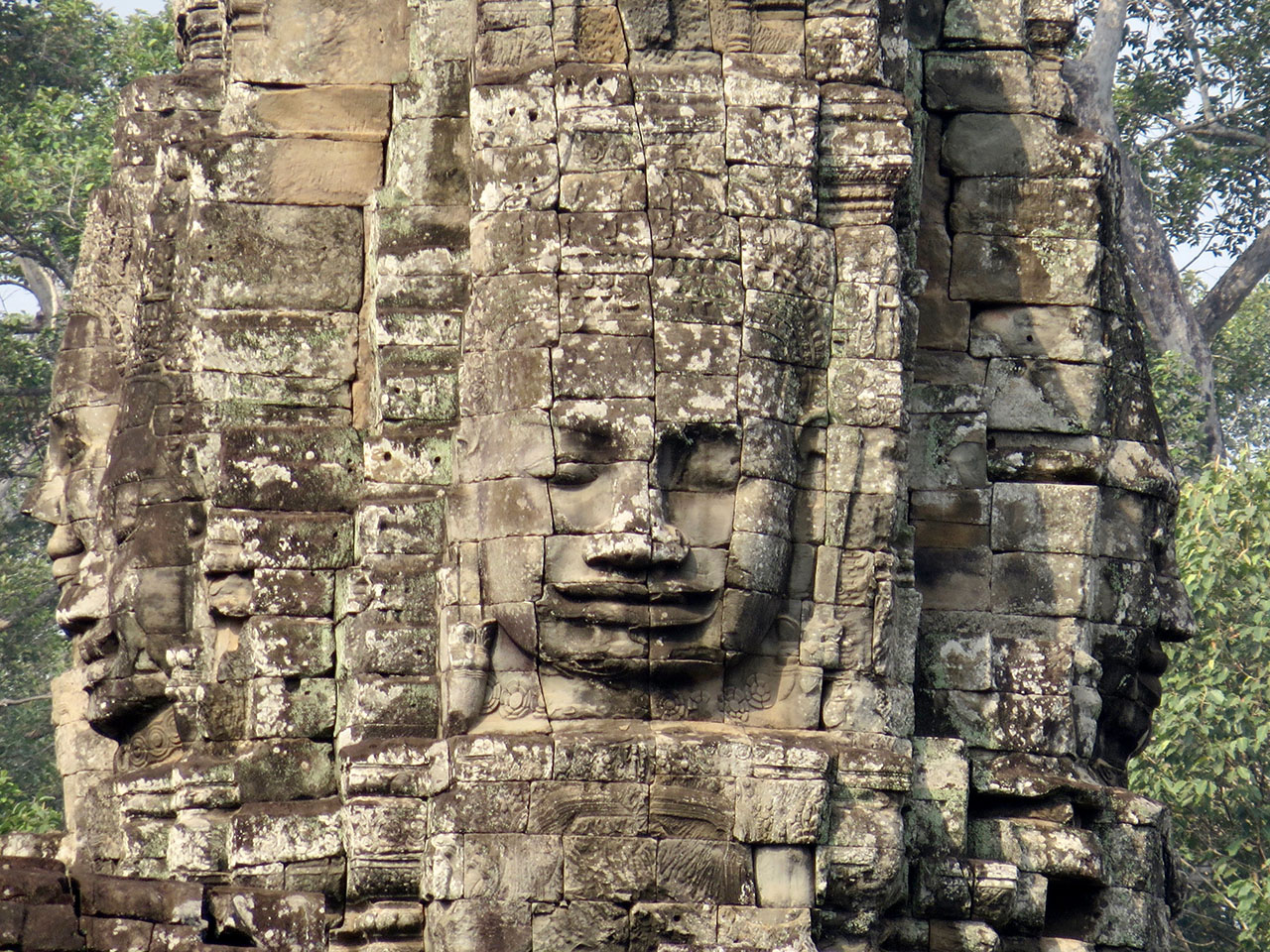
Apsara (dancers).
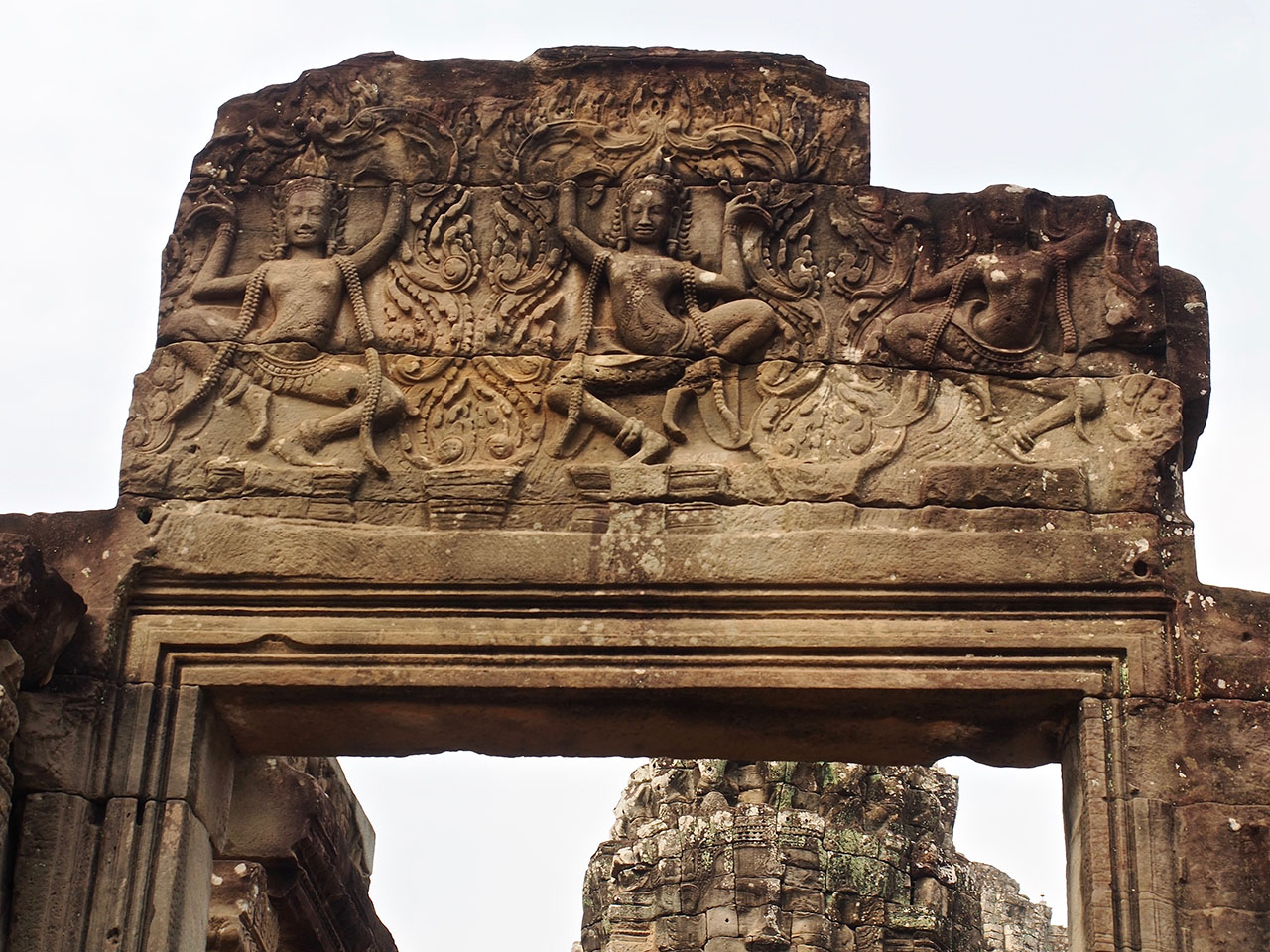
Military procession.
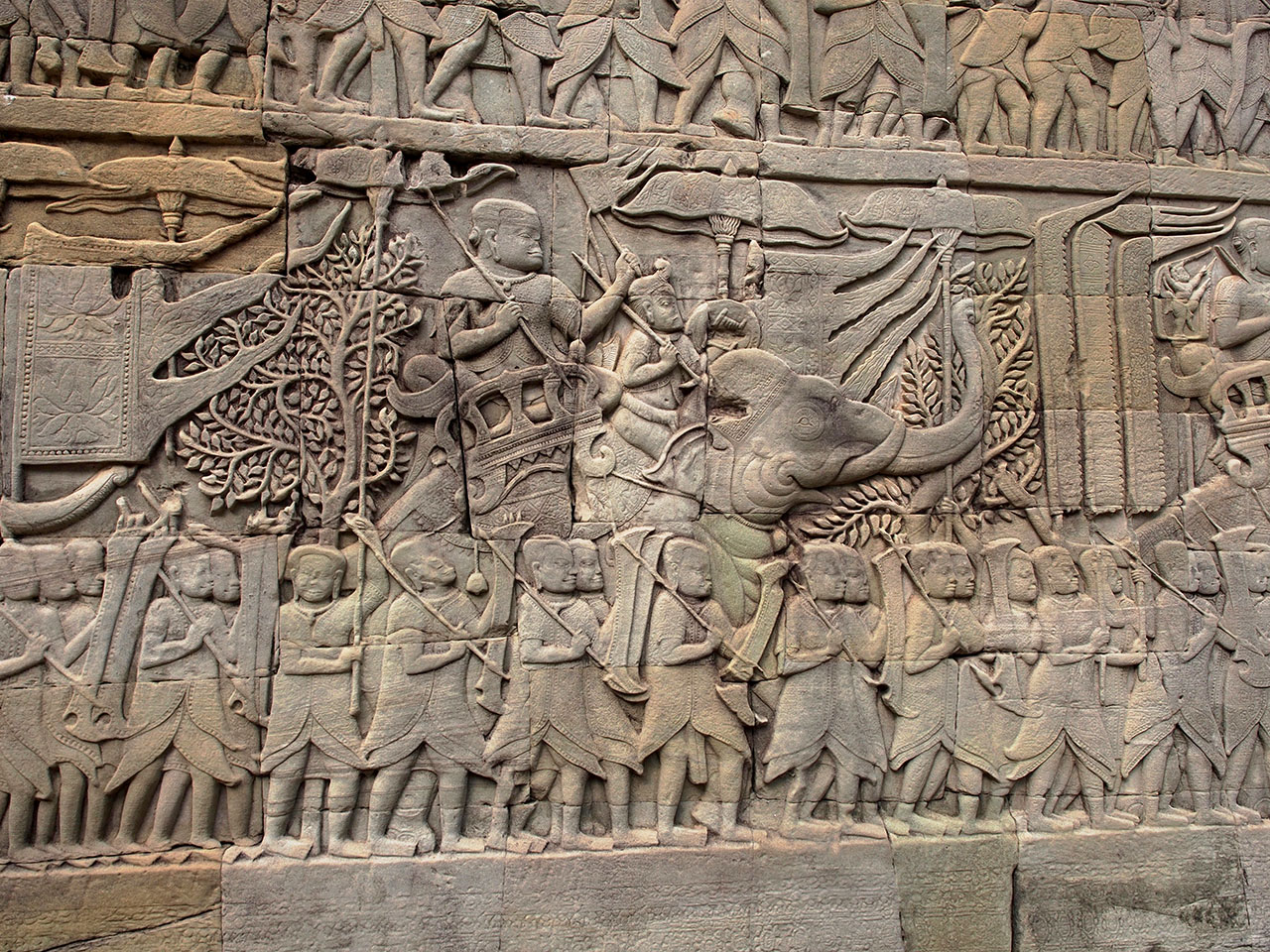
Everyday scene.
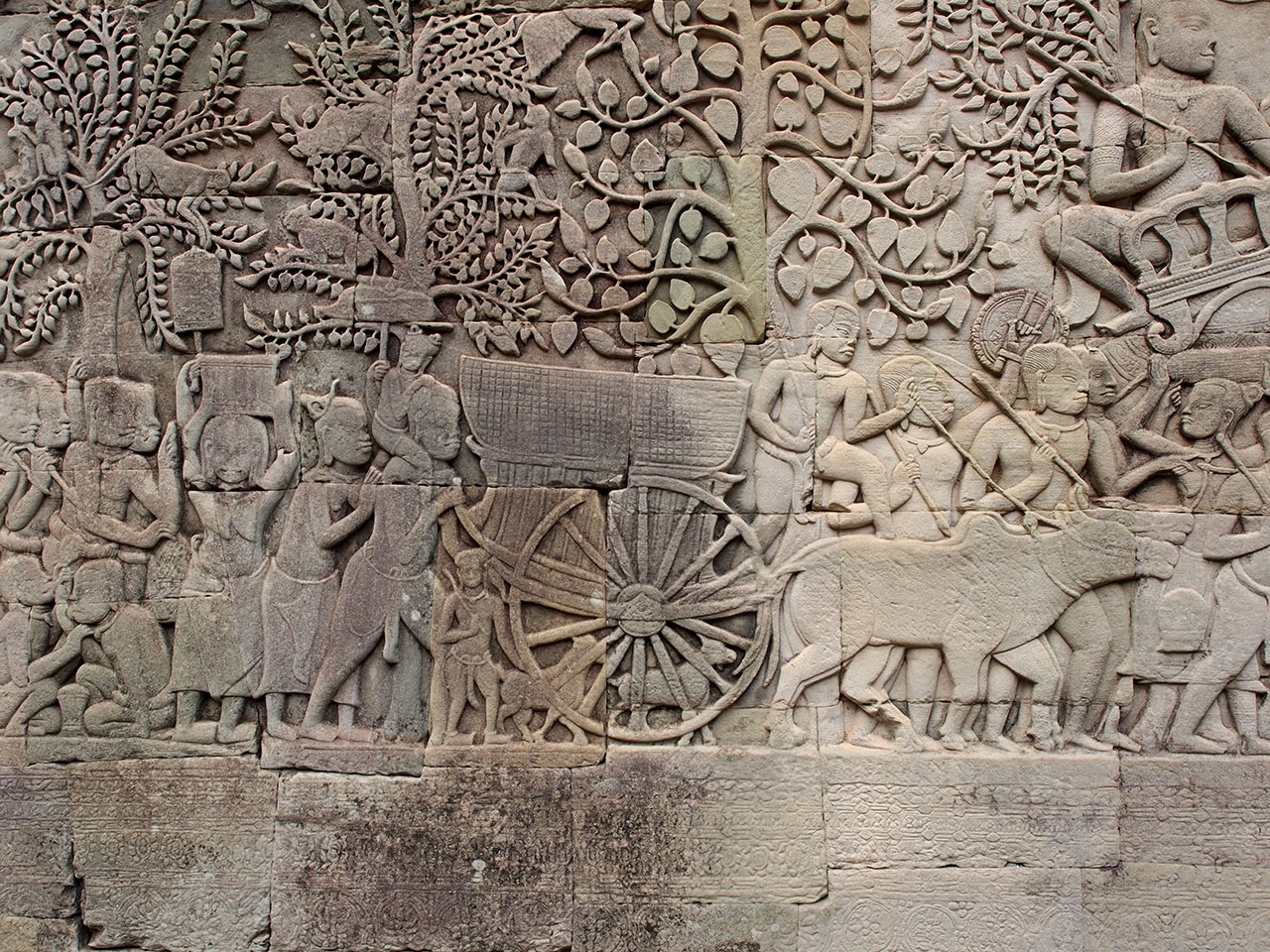
Up a level.
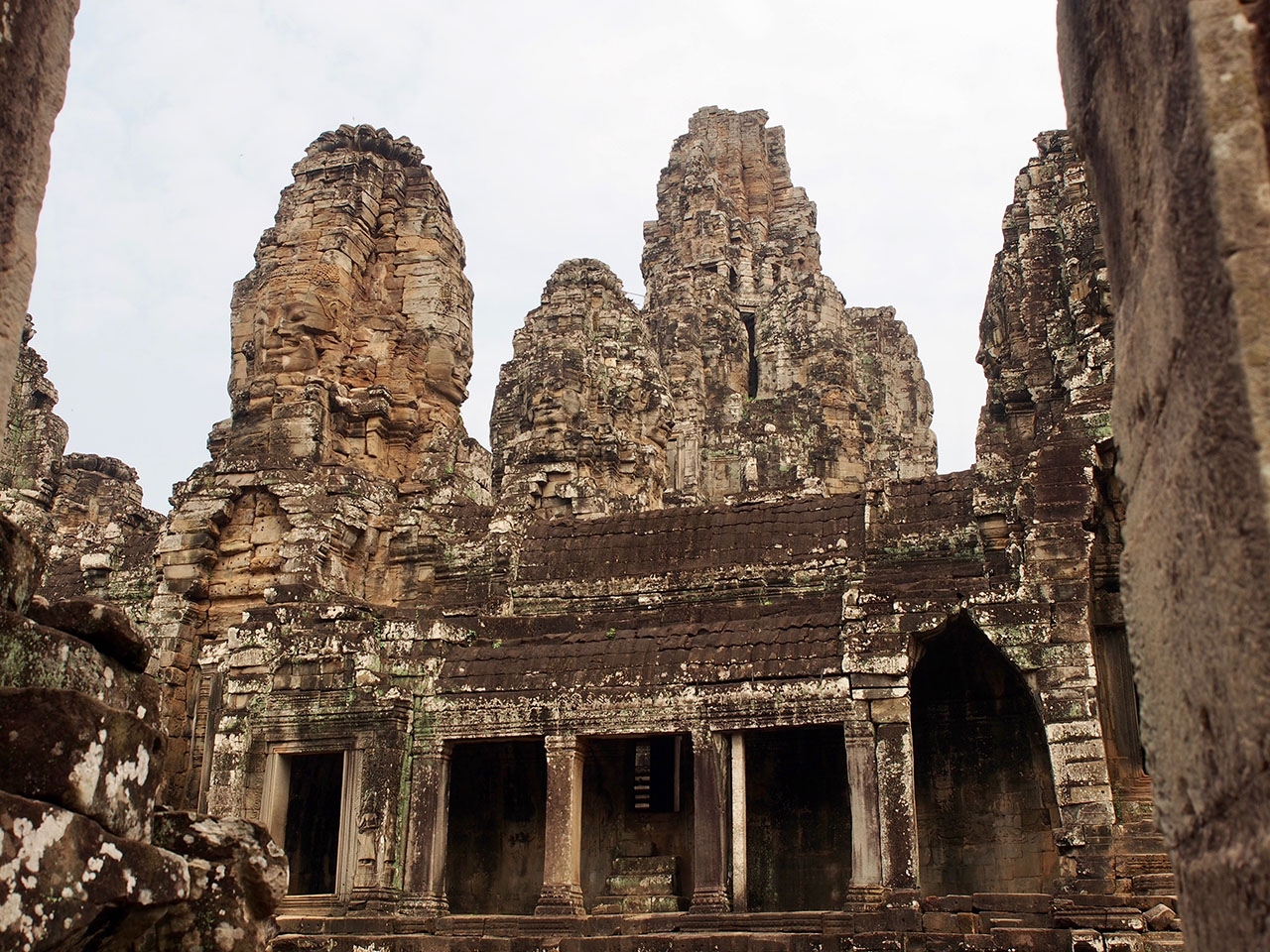
Devata (a type of diety) on the left, apsaras (dancers) below the window, and us.
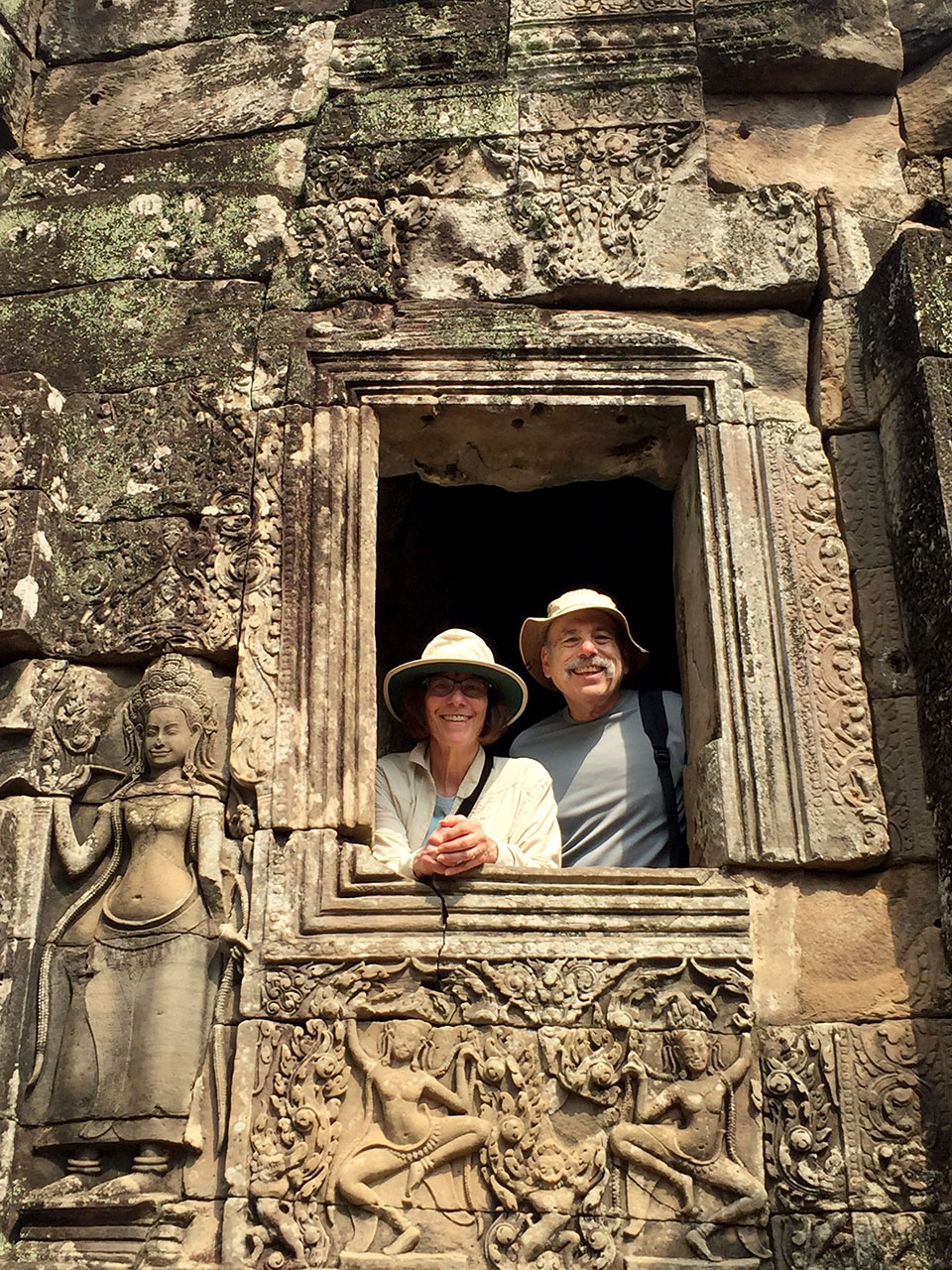
Some clever photography by Mony.
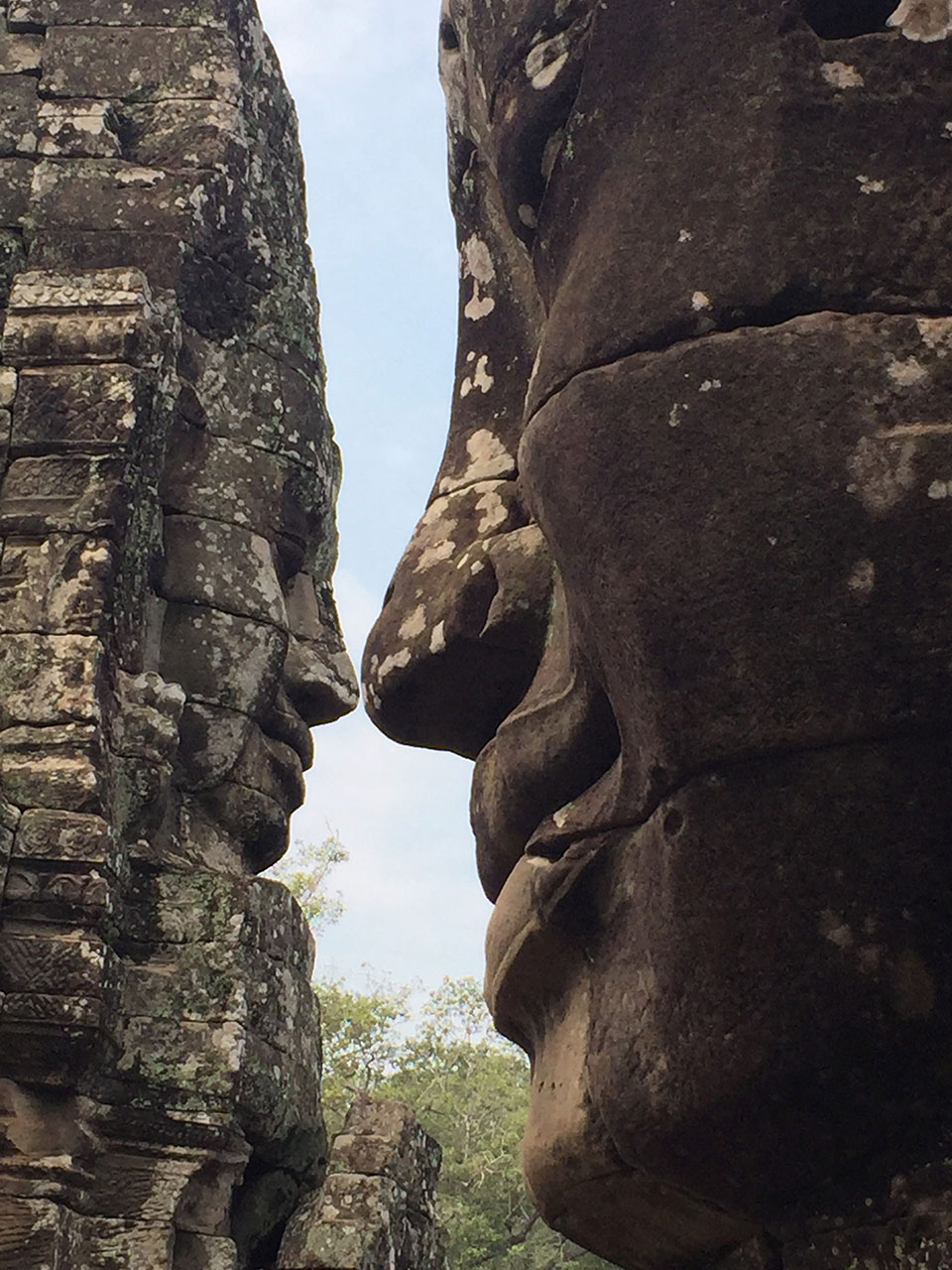
More Bodhisattva.
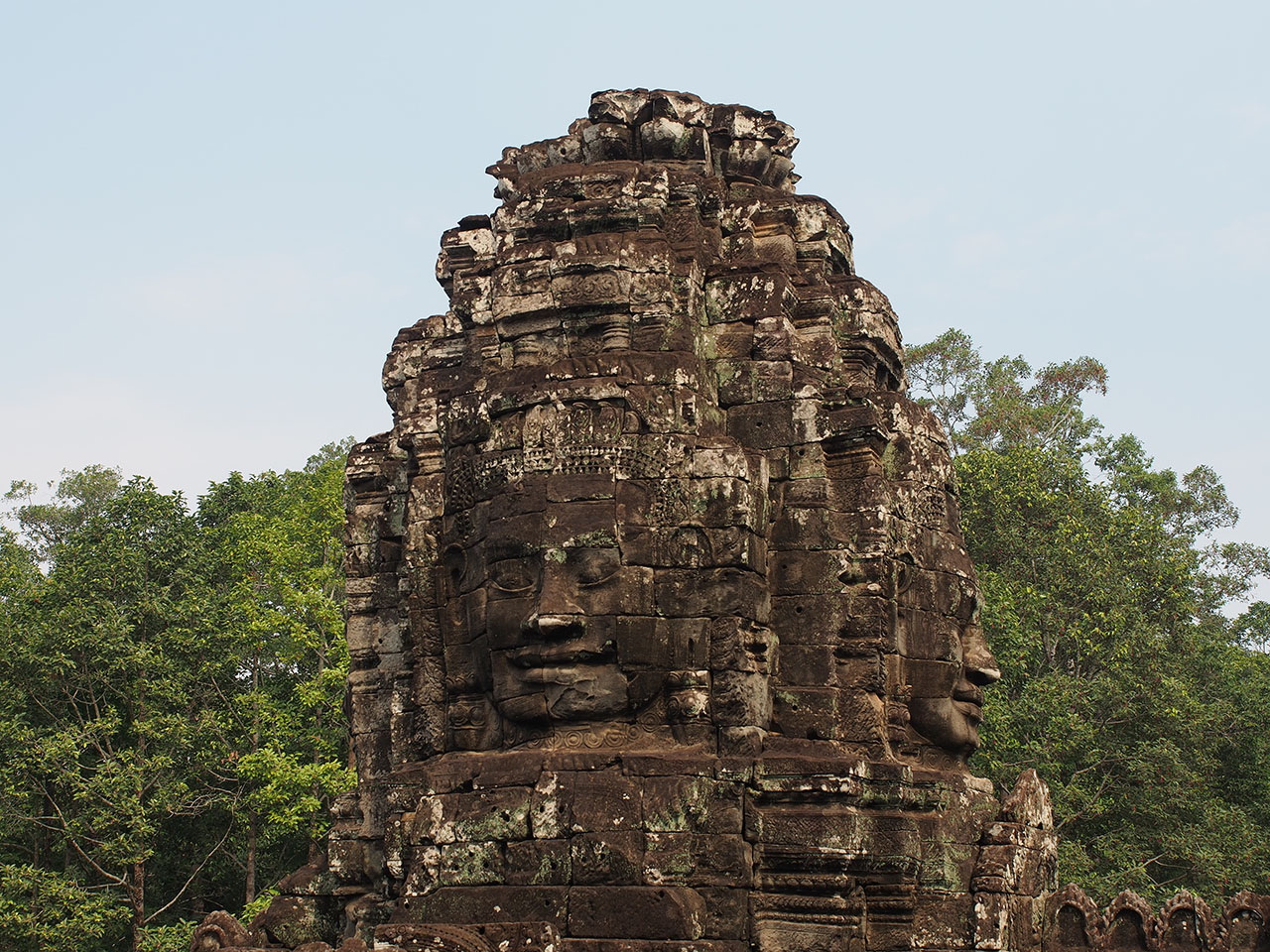
Leaving Bayon.
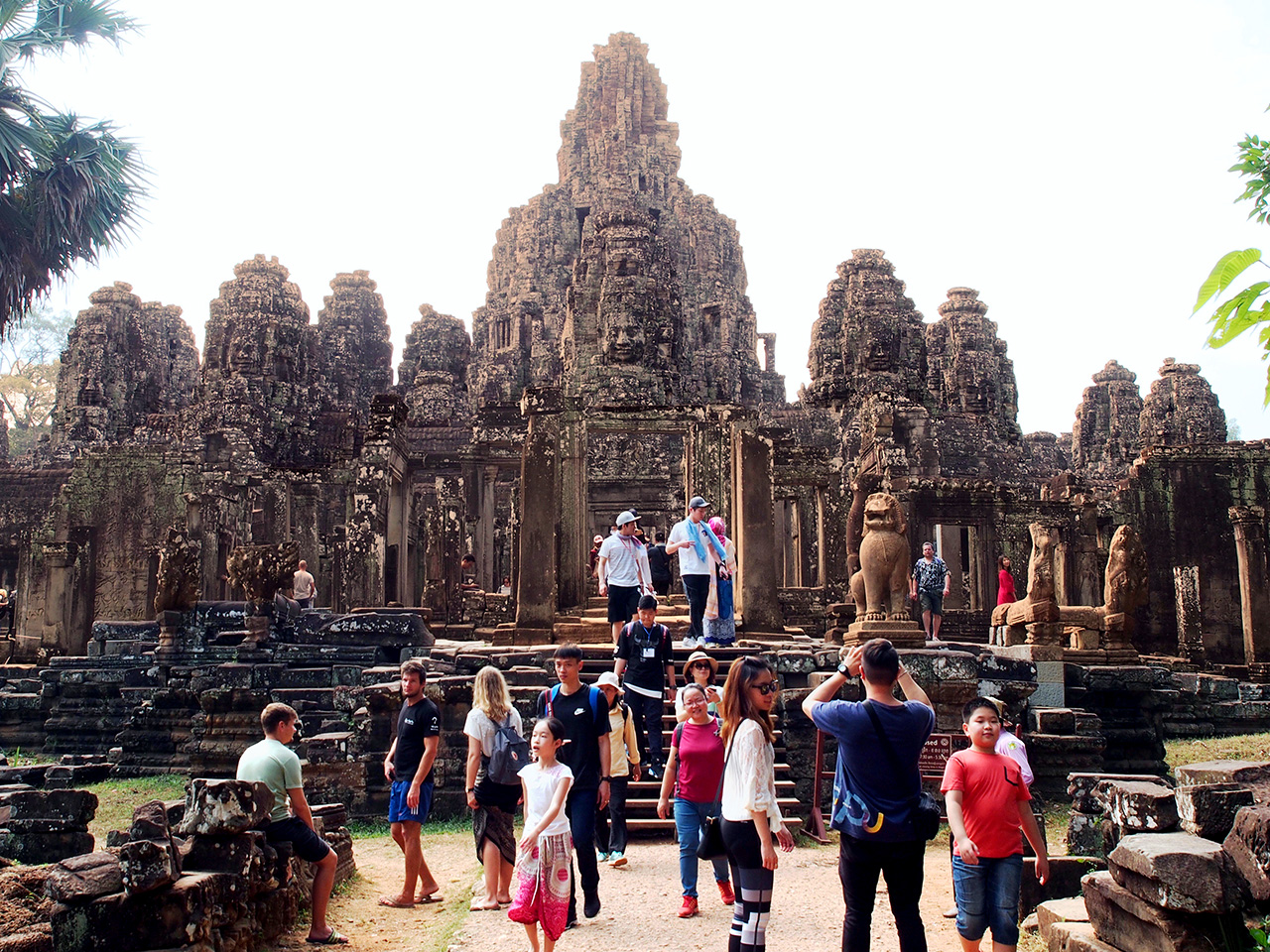
A glimpse of the Baphoun as we headed to the Terrace of Elephants and the Terrace of the Leper King (and nobody knows for sure why it’s called that).
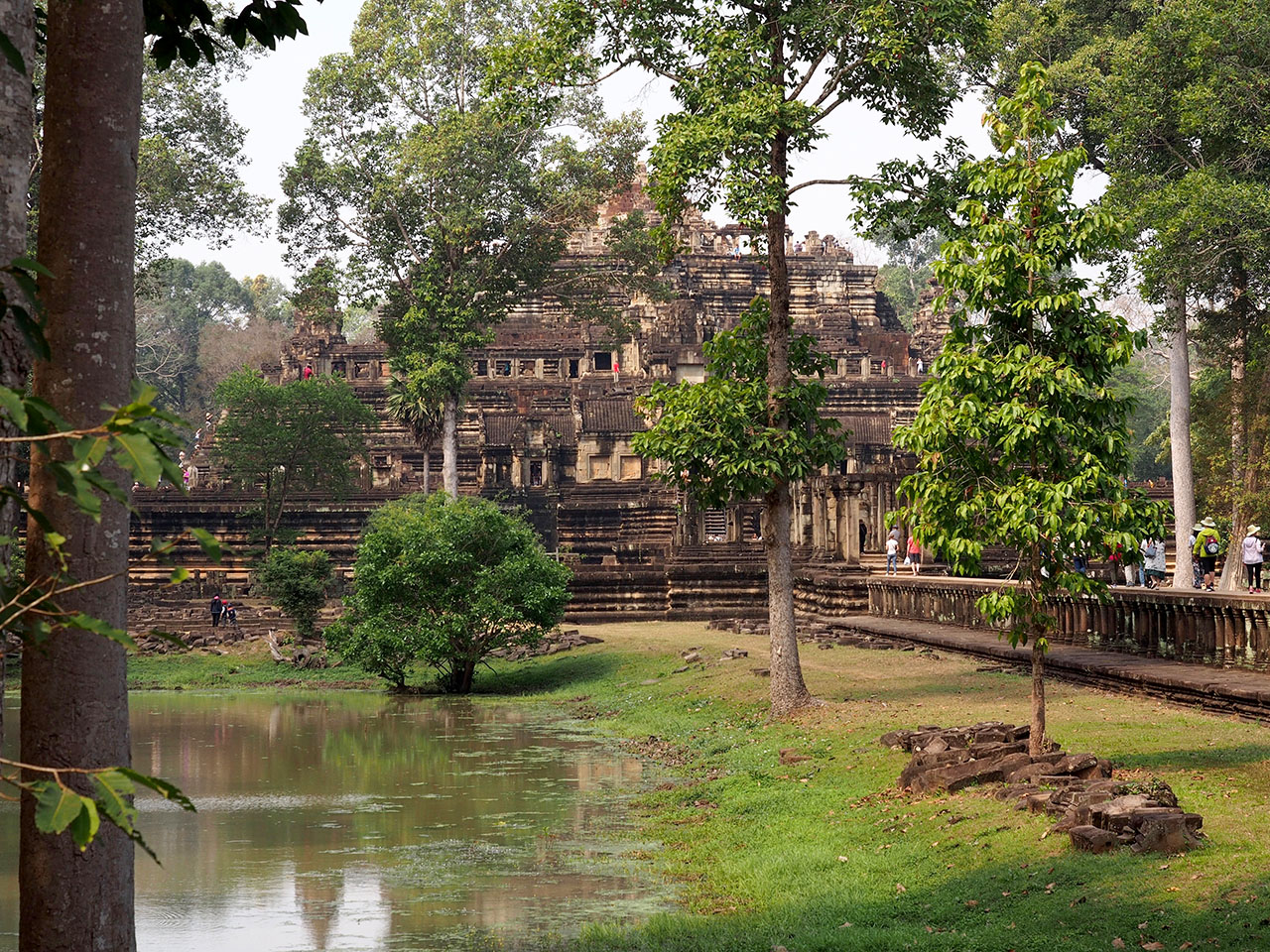
Terrace of the Elephants.
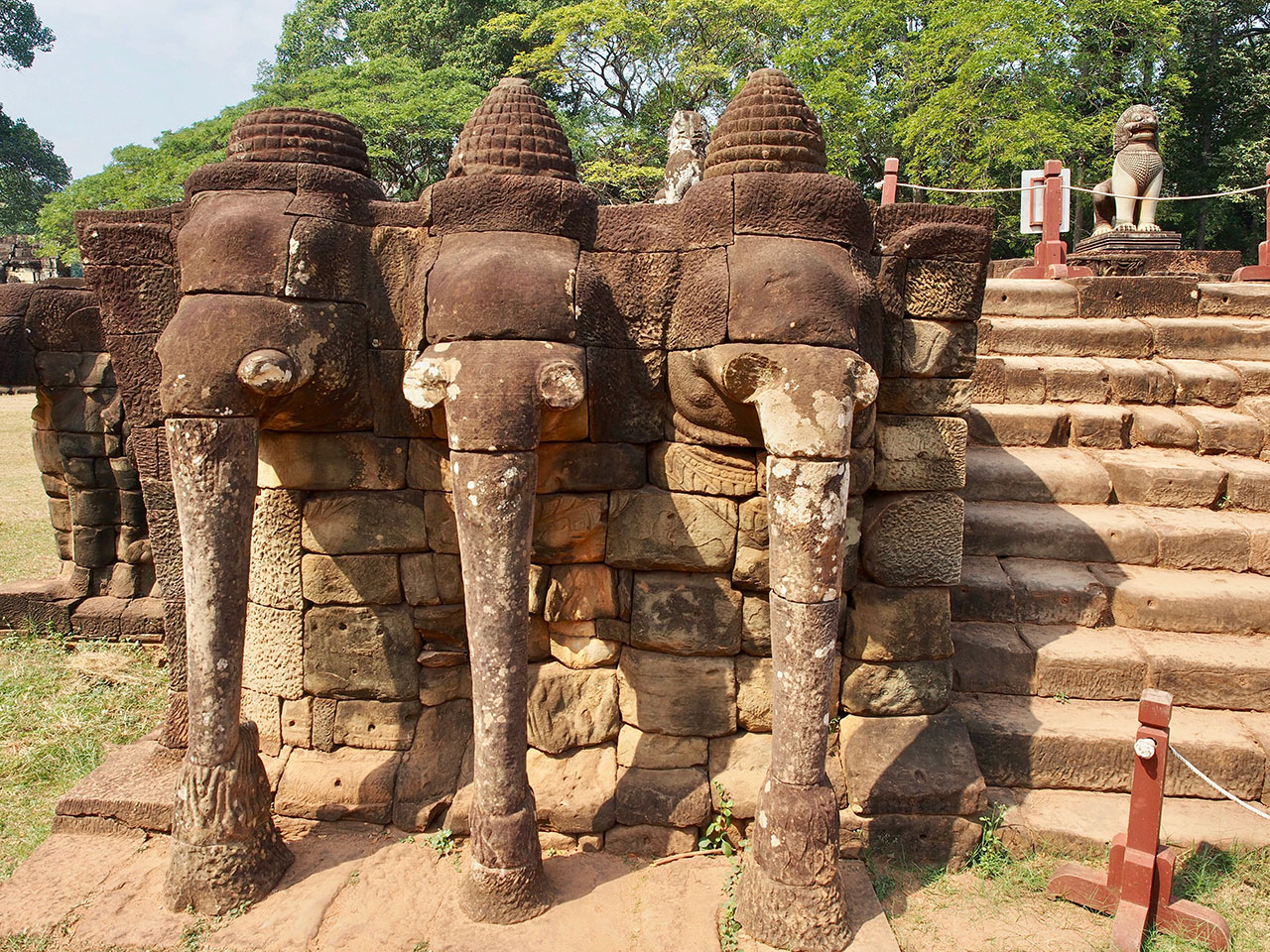
Garudas. (Garuda is a bird creature from Hindu mythology that has a mix of eagle and human features. He is the vehicle (vahana) of Vishnu and appears on the god's banner.)
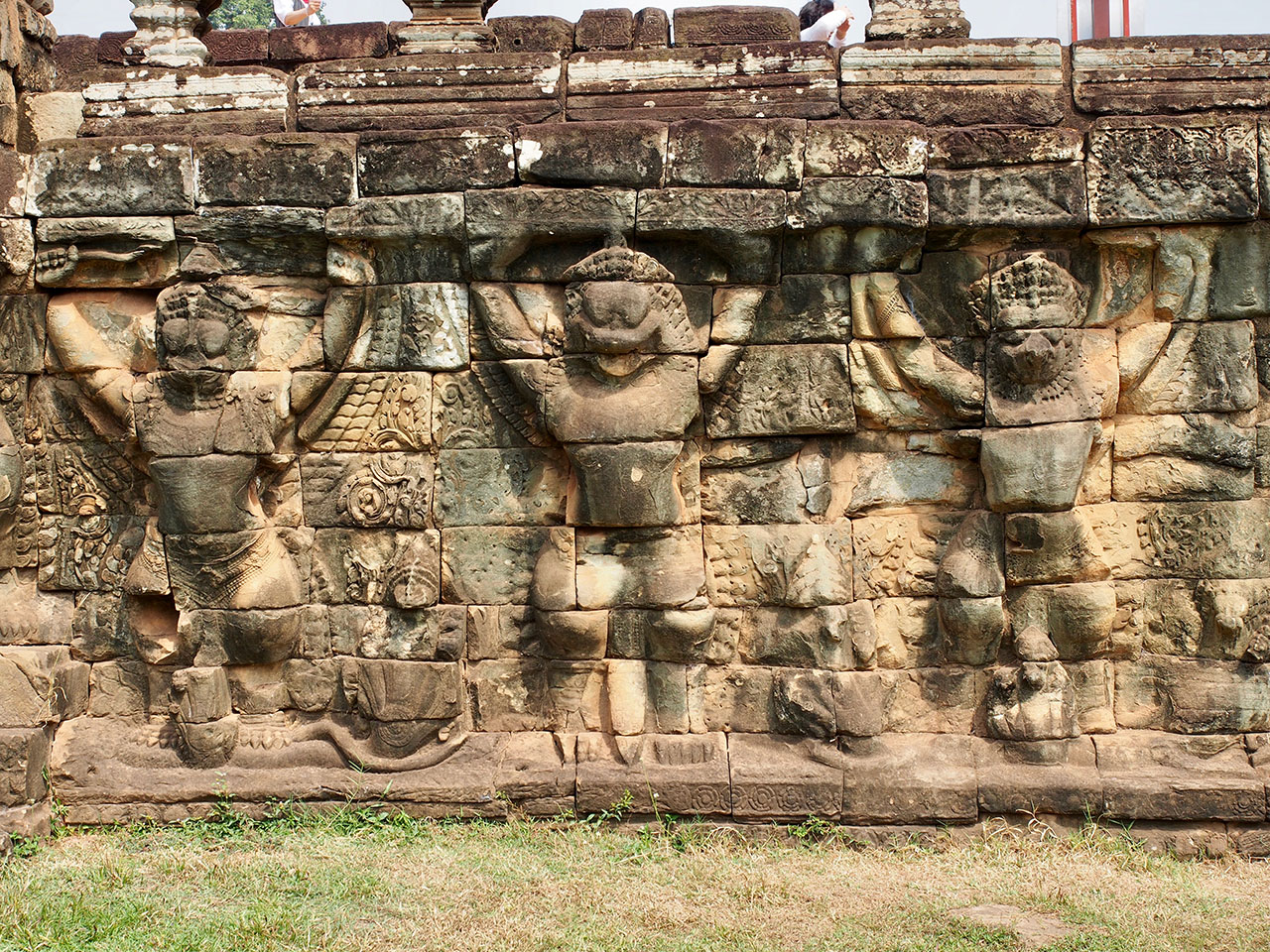
Looking across to the field used for circus and polo entertainment for the king.
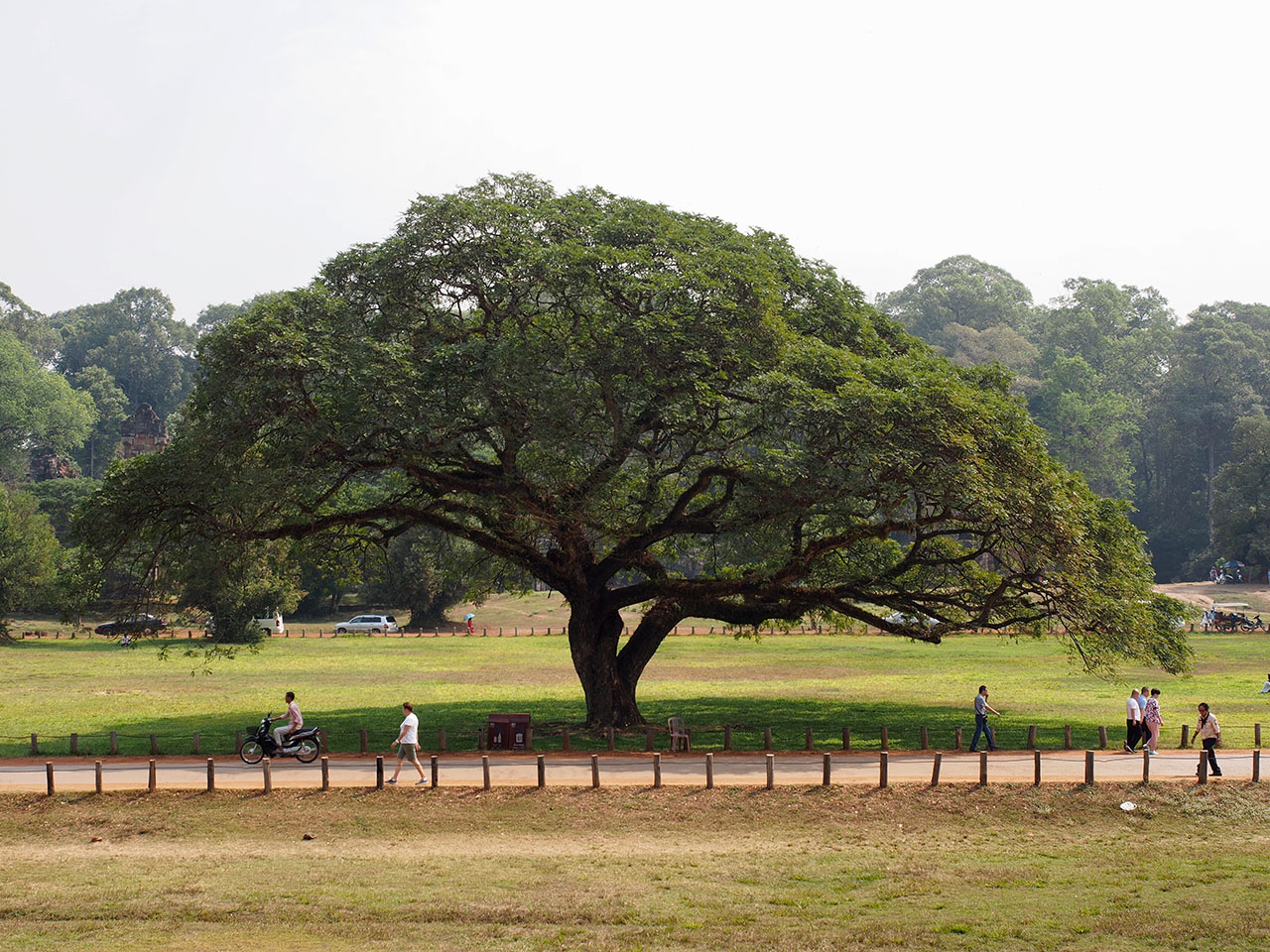
The next temple was Ta Prohm, the home of Lara Croft Tomb Raider.
--
Larry and Eileen Samberg

























